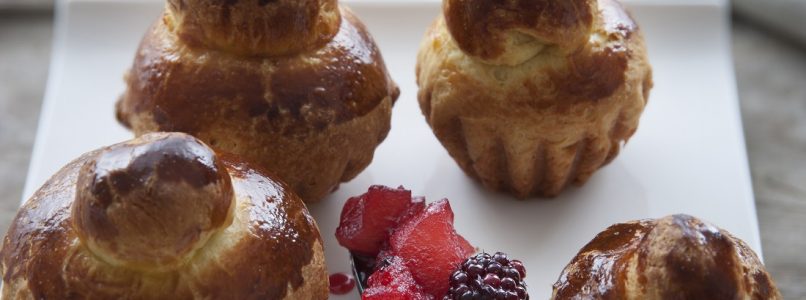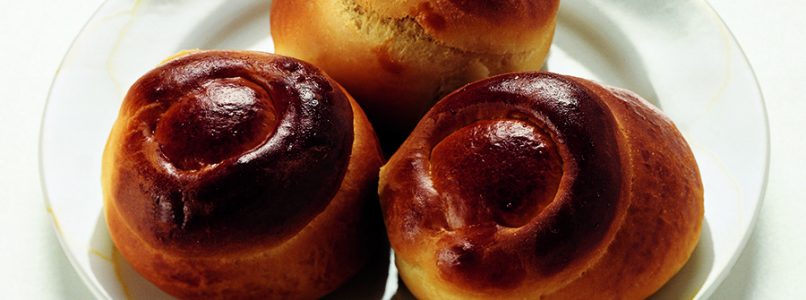Brioches a tete, the preparation
Doses for 18 brioches.
For the dough: 500 g of 00 flour + flour for the pastry board – 30 g of sugar – 1 teaspoon of salt – 10 g of fresh brewer's yeast – 3 eggs – 2 yolks – 150 g of soft butter + butter for the molds
For the compote: 2 golden apples – 1 basket of blackberries – 2 tablespoons of brown sugar – the juice of 1/2 lemon – 1 hazelnut of butter (about 10 g)
1) Pour the flour, sugar and crumbled yeast in the mixer. Activate the hook at low speed And incorporated the eggs; when the dough is formed, add the soft butter, a little at a time. Knead the dough a medium speed for about 10 minutes, until it becomes elastic and detaches from the walls. Cover the bowl and leave bump up the dough for 1 hour.
2) Remove the pasta from the bowl, form a loaf, cover it with plastic wrap and put it on in the fridge for 2 hours. Divide the dough into 18 servings; with your hands shaped into the balls and put them back in the refrigerator.
3) Butter 18 scalloped molds; roll a ball on the floured surface forming a cylinder, then remove a piece the size of a hazelnut; transfer the prepared cylinder of dough into a mold by rolling it on the bottom, then, with your index finger, form a groove and arrange the ball of pasta.
4) Prepare all the croissants filling the other molds proceeding in the same way and leave bump up for 2 hours.
5) Brush brioches with beaten egg yolks e bake at 180 degrees for 10 minutes.
6) Peel the apples and cut them diced, transfer them to a saucepan with the sugar and lemon juice, cover and cook 15 minutes. Add the blackberries, cook another 5 minutes in an uncovered casserole. If you like, you can perfume with cinnamon powder. Accompany the brioches with the compote thus prepared.


